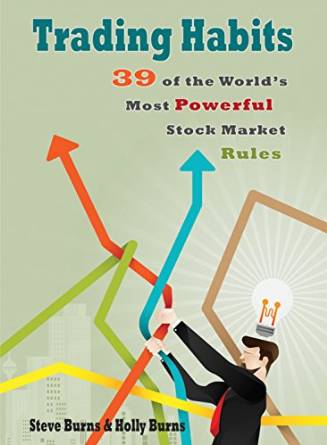This post is an excerpt from my best selling book “Trading Habits” and is rule #1 of 39.
“Because they have no rules to follow, everything no-rules discretionary traders do is a mistake.” – Van Tharp
- A winning trading system must either be designed to have a large winning percentage of trades or big wins and small losses.
There are two paths to profitable trading, accuracy of winning trades or size of winning trades. If your winning trades and losing trades are the same size then you must have more wins than losses to be profitable. A trading system with equal size wins and losses simply has to have more wins than losses to be considered a winning system. This seems like common sense, however high win rate systems can quickly become unprofitable when losses are allowed to get out of hand and become large. Too many high win rate systems give losing trades too much room to run and they achieve their high win rate by holding long enough for the trade to come back to even or become a winning trade. When a market environment changes from range bound to trending this no longer works and losing trades do not always bounce back. A high win rate system has to be built on the accuracy of an entry and the probability of it being a winning trade not in the hope of holding losing trades until they come back. It is crucial to cut losers short even in high win rate trading systems so one big loss does not give back a large amount of previous profits. High winning percentage systems have to be built on the odds that the profitable price target is reached or the trailing stop is hit for a profit before the stop loss is reached in the majority of cases. The old Wall Street saying “You can’t go broke taking a profit.” is not true. If you take a bunch of small profits all it takes is a few large losses to break you.
On the other side of the fence are the trading systems with less wins than losses but are profitable over the long term because the losses are kept small and the size and scale of the winning trades are far bigger than the losing ones. Lower winning percentage systems are primarily used by long term trend followers, breakout traders, and option buyers. The bigger their winning trades are the lower their winning percentage can be and they are still profitable.
The key is capping the downside risk when you are wrong but leaving the upside profit potential open, in essence the old saying: “Cut your losers short but let your winners run.” A stop loss is your insurance against having any big losers and your use of trailing stops instead of profit targets leaves your upside profits open so you can let winning trades trend as far as possible capturing those out sized moves that are not expected and are outside the normal bell curve of normal price movements. When other traders are on the wrong side of an out sized trend you are on the right side or stopped out if you were on the wrong side as it begun. When traders that do not use stop losses are holding a large loss you are making a large gain letting a winner run and trailing a stop loss behind in case it reverses. The key to being profitable in a low win rate system is you want to risk every $100 for the chance to make $200, $300, $500, or more. If you are wrong you accept that and exit losing each $100, but if you are right you are going to make $200 or more for each $100 you risk. You don’t have to be right every time you just have to right big and wrong small. You have a set ante into the pot that you are willing to risk for the chance of winning the whole pot. If you are right you stay right for as long as possible, if you are wrong you get out with a small loss and wait for the next opportunity. The error of cutting winners short at the beginning of a trend and letting a loser run on the wrong side of a trend are the two biggest causes of unprofitability in the financial markets.
A 1:1 risk/reward ratio requires a greater than 50% win rate for profitability.
A 1:2 risk/reward ratio requires a greater than 33% win rate for profitability.
A 1:3 risk/reward ratio requires a greater than 25% win rate for profitability.
A 1:5 risk/reward ratio requires a greater than 17% win rate for profitability.
The bigger your wins are the less of them you must have to be profitable. The more accurate your entries and exits the less losses you have to take. You can be profitable with fewer big wins as long as losses are kept small or the majority of your trades being a win with a smaller percentage of them being small losses, however big losses are the fastest path to being unprofitable regardless of other factors.
Check out 38 more of the world’s most powerful stock market rules in my best selling book Trading Habits.
